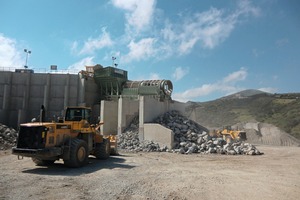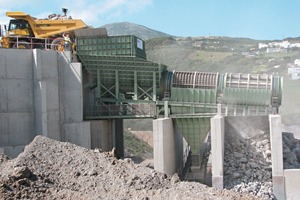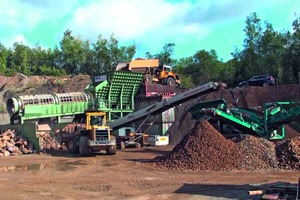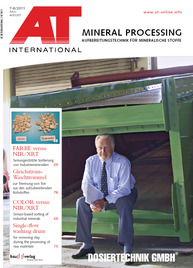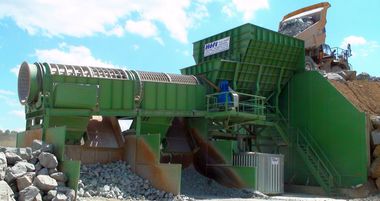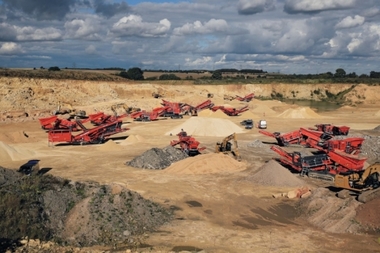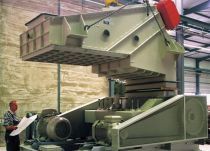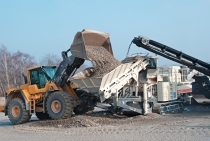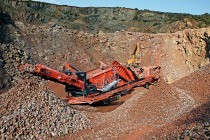Exact separation of heavy stones
In 2005 the team of engineers from Höft GmbH headed by the Managing Director Gunter Höft had to take up the challenge to develop a rotary screen for the separation of stones for hydraulic engineering according to the lat-est DIN EN 13383.
The standard DIN EN 13383 comprises three different basic categories – the size categories CP, the lightweight classes LM and the heavyweight classes HM. These basic categories are subdivided into a further five subclasses. The different types of rock suitable as stones for hydraulic engineering, such as granite, bas-alt, gneiss, amphibolite, diabase or limestone, with their different densities result in different grain sizes as regards the corresponding weight classes. Stones for hydraulic engineering are used in the river bed for embankments, for safety measures in hydraulic engineering, in harbour engineering, along rivers and lakes, but also for road construction, slope construction and in mixed grains. At that time the task of the Höft engineers was to develop a rotary screen suitable for the various requirements. The successful solution of the problem was the rotary screen, type Höft TS 2.3 x 10.8 (Fig. 1), with which it was possible to screen stones for hydraulic engineering ranging from 0 to 800 mm. Since then Höft GmbH has supplied various rotary screens to their customers. In February 2011, a TS 2.3 x 10.8 (Fig. 2) for sizes of up to 1200 mm was commissioned in Morocco. The largest rotary screen manufactured so far by Höft is used for screening material in harbour engineering. The rotary screens with capacities of 400 up to 1000 t/h consist of a feed bin, screening drum and discharge chutes. The feed bin with a volume of 25 m³ to 80 m³ can be fed by wheeled loaders or dumpers with capacities of 30 up to 60 t.
Depending on the load, the four fractions are designed in different materials. The mesh width of the individual segments can be determined according to the requirements of the operator. The drive unit consists of a chain and gearbox including an electromotor. The reciprocating table can be controlled hydraulically. From there the fractions are transported by wheeled loaders or conveyor belts to be further used. According to the manufacturer these plants have essential advantages over comparable step grates or vibrating screens due to their ruggedness, long service life as well as low acquisition and maintenance costs. Furthermore, a rotary screen can be used for extreme screening with very good cuts and a high cleaning effect.
Material, which until now has been on a stockpile and has not been utilized, can be effectively sorted and, consequently, hidden material resources can be sold with profit.
steinexpo: (pavilion) P206

